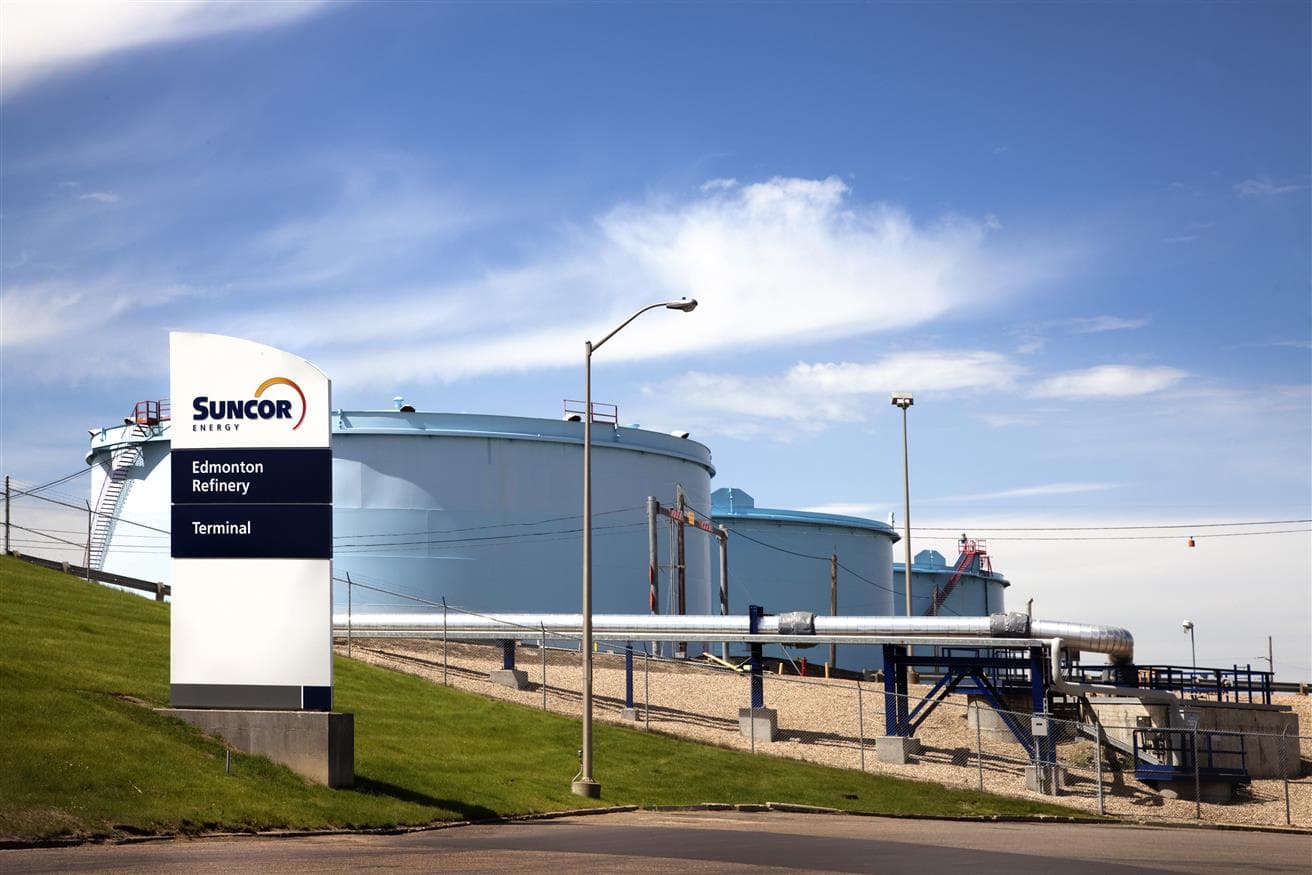While the idea of using hydrogen outside of Suncor’s core business is relatively new, we’ve been producing and using hydrogen for about 50 years. In fact, Suncor is the largest producer and consumer of hydrogen in Canada.
“Suncor is wanting to expand our use of hydrogen for two reasons,” explains Kelly Campbell, Director, Clean Technology Development. “We’re looking to decarbonize emissions from our existing hydrogen use and to expand it for use in other applications including as a clean fuel or feedstock for the production of biofuels.”
Hydrogen is currently used in our Montreal, Sarnia, Commerce City and Edmonton refineries, and in our upgrading operations as feedstock to produce different end products. We produce it at our Base Plant and the Montreal refinery. And when the renewable fuels plant in Varennes, Quebec, is complete, hydrogen will be used as feedstock to make biofuels.
Hydrogen’s true colours
Hydrogen is a colourless gas, but there are different manufacturing processes that are described using colours. The most widely talked about colours are:
- Grey hydrogen: is the result of a greenhouse gas- (GHG-) intensive process called steam methane reforming (produced and used at our Montreal refinery).
- Turquoise hydrogen: is produced from natural gas using a process called pyrolysis. Suncor is advancing technologies to produce turquoise hydrogen, which could be very promising for providing a low-GHG and lower-cost hydrogen product.
- Blue hydrogen: is produced when the CO2 generated in the process is captured and stored underground, making it more than 90 per cent emissions-free.
- Green hydrogen: is manufactured using water as feedstock and electricity —a process called electrolysis—and has no CO2 associated with it, making it virtually emissions-free (if the electricity comes from a clean source).
As with any processing, the more labour- and energy-intensive a hydrogen production process is, the costlier it becomes.
“We need to look at total emissions,” explains Kelly. “Currently, hydrogen is produced using a very GHG-intensive process. But, if hydrogen is produced by capturing and storing the CO2 emitted from the production process, you’ll have a low-emitting fuel.”
The future of hydrogen
With the Government of Canada releasing its Hydrogen Strategy in 2020, it’s expected that this molecule will be in demand, with the potential to fuel some of Suncor’s heavy-duty vehicles and sell hydrogen to the market, helping others reduce their emissions too.
The Alberta Zero Emissions Truck Electrification Collaboration (AZETEC) is an 18-month pilot that will see the design, manufacturing and testing of hydrogen fuel-powered trucks operating between Calgary and Edmonton—a step toward developing viable commercial transport fueling stations.
However, that doesn’t mean we’ll see a hydrogen option at the pumps soon, says Carlos Giraldo Sierra, Program Lead, Clean Energy and Hydrogen: “The conventional car cannot run on hydrogen and there isn’t widespread hydrogen fueling infrastructure yet. But hydrogen can play a key role in the heavy-duty, long-distance transportation sector—where electric vehicles don’t have the power and range needed. That is why it is so important to participate in the AZETEC project.”
The future of hydrogen is bright (and colourful), with Canada’s energy sector rallying behind a net-zero tomorrow. For example, we have partnered with ATCO to explore the early stage design and engineering for a potential world-scale clean hydrogen project in Alberta. If it moves ahead, the project would produce more than 300,000 tonnes of clean hydrogen, reducing Alberta’s CO2 emissions by more than two million tonnes of CO2 a year, which is the equivalent of taking 450,000 cars off the road annually, and would help us get to a cleaner future.
“You’re going to have electricity, fossil fuels, biofuels and hydrogen in the future energy mix,” adds Carlos. “We think hydrogen is going to play a key role in the low-carbon economy.”


.jpg?mw=304&modified=20220608180838&hash=85BB556A7B906B28A7B5A7DDA607BC3C)

